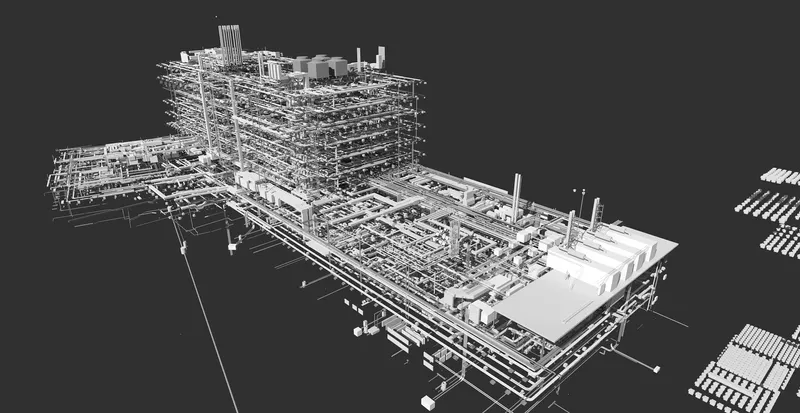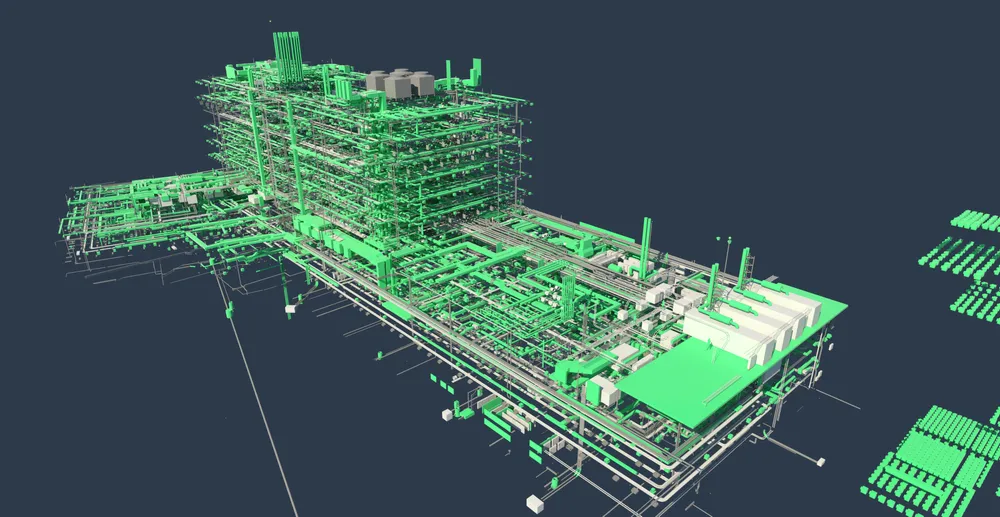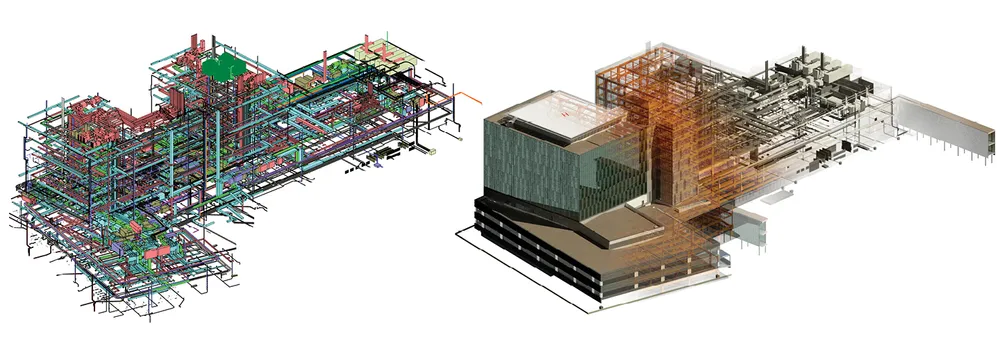NewsPerspectives
BIM: The future of the construction industry

One platform, one common language. One 3D design.

And it’s not just the design process that has been digitised; BIM has also changed the way that contractors construct buildings. Builders on site can use a tablet computer to view the BIM plan as a digital overlay on top of what they are physically seeing, similar to ‘augmented reality’ but with a construction focus.
A laser grid that is accurate down to the millimetre is projected on the area being worked on and the tablet computer is able to pick it up and use it to show the BIM model overlaid on a live picture feed so that workers can see exactly what the project is supposed to look like and work precisely to plan.
For instance, we were recently working on a project which required fixtures on a concrete wall and ceiling. Traditionally those fixtures would require a lot of work drilling into the concrete, but because we were able to visualise the project using BIM tech, the building contractor was able to install them in place before the concrete was poured with confidence that they had been placed accurately. Having a comprehensive 3D plan that is geospatially correct makes following the plan much easier, and can reduce installation time in this way by up to 50%.

With BIM, there are better options to pre-manufacture. When you have certainty on how the building is going to fit together digitally, you can manufacture complex parts of the building in a controlled factory environment. When the entire piece can be assembled in a factory, out of rain, sleet, hail, then brought to site and screwed into place, that’s a good thing for the project’s efficiency.
Using BIM also helps businesses get a return on their capital by allowing them to monitor and assess the performance of their facility from energy usage through to operational efficiency before it is built. For every $1 that’s spent on design, another $10 is spent on construction, and another $100 is spent on the running of the project over its lifetime. So, if you can be more efficient in the operations of a building, you’ve done something magical. BIM is a long-term investment, not just a short term fix.
The first working example of this in our part of the world will be the Sydney Opera house. A comprehensive BIM model is being developed to track everything from bookings to mechanical equipment. A lot of people underestimate the componentry hidden behind the walls and ceilings that go into making a theatre facility work. The servicing of machinery is a big task and traditionally a paper and email based system has been responsible for thousands of individual parts. It’s a mental mind field making sure that each has been serviced, isn’t faulty, and none of the components need replacing. The last thing you want is for people to turn up on show night and find that the AC is not working properly because a filter has not been replaced. Even the roof tiles are bar coded and scanned so that if anything happens, they should be able to replace any tile with one of the right size as easily as a light bulb.
Using computational models to monitor energy efficiency has been around for a while amongst technical specialists, but BIM has started to socialise these things with the lay person so that they can understand it by visualising it as a 3D model. For example, if the Sydney Opera House were to install new air conditioning they would use computational fluid thermodynamics to choose the optimal position, and they can use the BIM model to visualise air tunnels in 3D and see that air flows will function as intended.

What businesses need to know is that the world is changing. The way contracts and projects are being procured is changing. The construction efficiencies that can come from BIM are exponential. For building and design, it’s really adapt or fold. It’s like Kodak – they were making money for hundreds of years in camera and film, then digital technology came along, and they didn’t embrace it, they didn’t adapt. Now they’re gone.